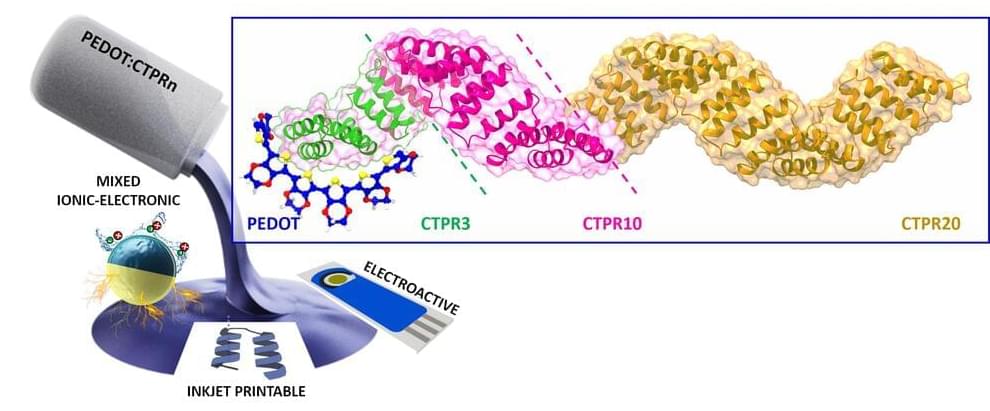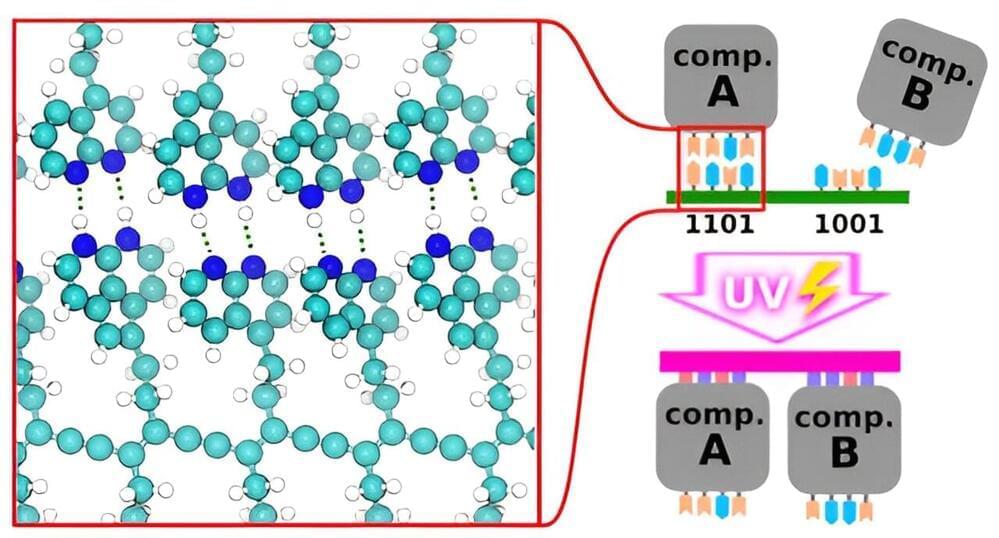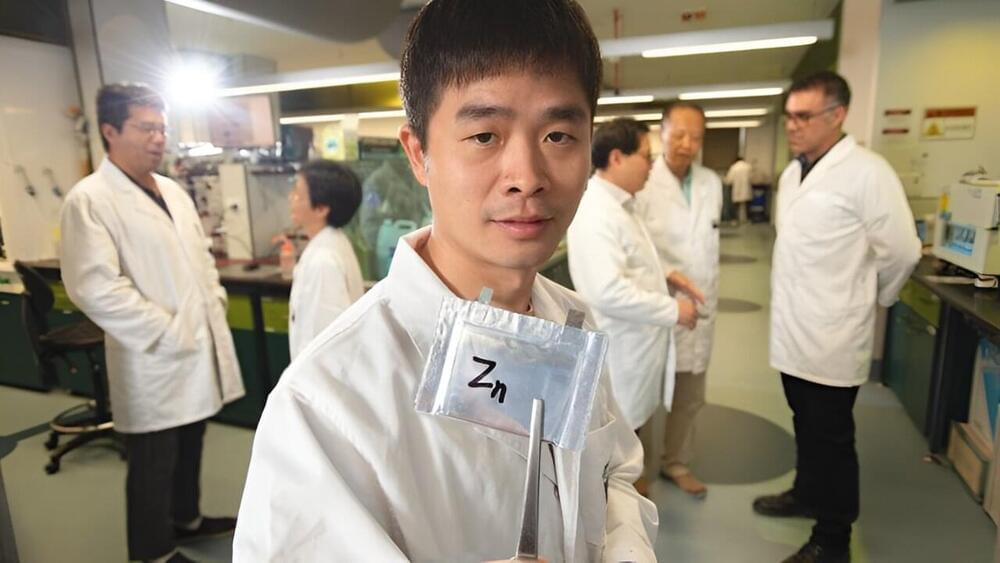Bioelectronics is a field of research in which biology and electronics converge. In medicine, for example, an external electric current is used to cure or monitor diseases of the nervous system, and also to monitor biomarkers in situ. Devices made of conductive materials are used for these applications.
The most widely used conductive polymer so far in energy and biomedical applications is PEDOT doped with PSS, known as PEDOT: PSS. Despite its exceptional properties, new conductive materials that can improve some of its limitations, such as biocompatibility, still need to be developed.
A study conducted by CIC biomaGUNE’s Biomolecular Nanotechnology group is proposing a mechanism for doping PEDOT using a robust engineered protein (PEDOT: Protein); the outcome is a hybrid material with ionic and electronic conductivity, which is quite similar to PEDOT: PSS in some cases. The paper is published in the journal Small.





